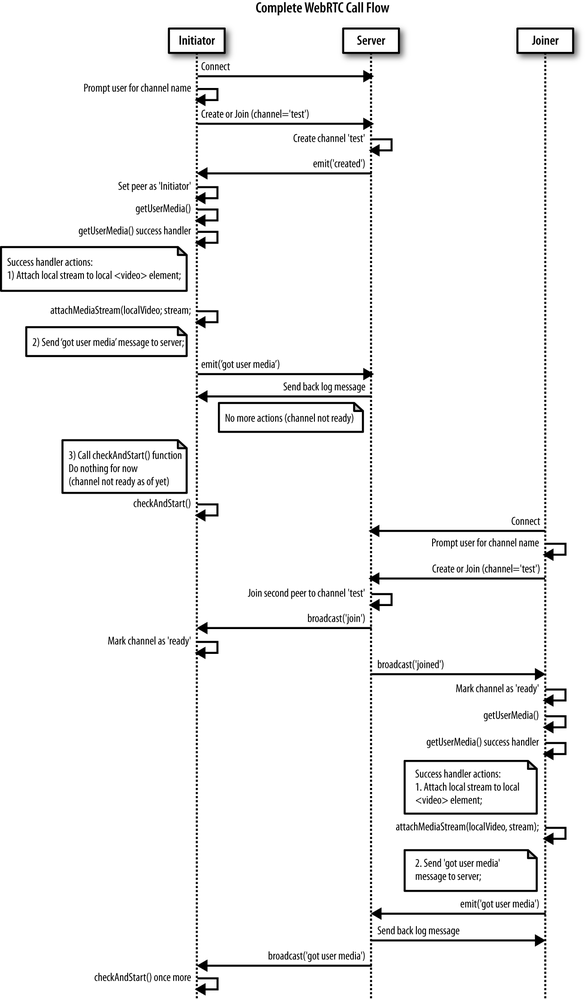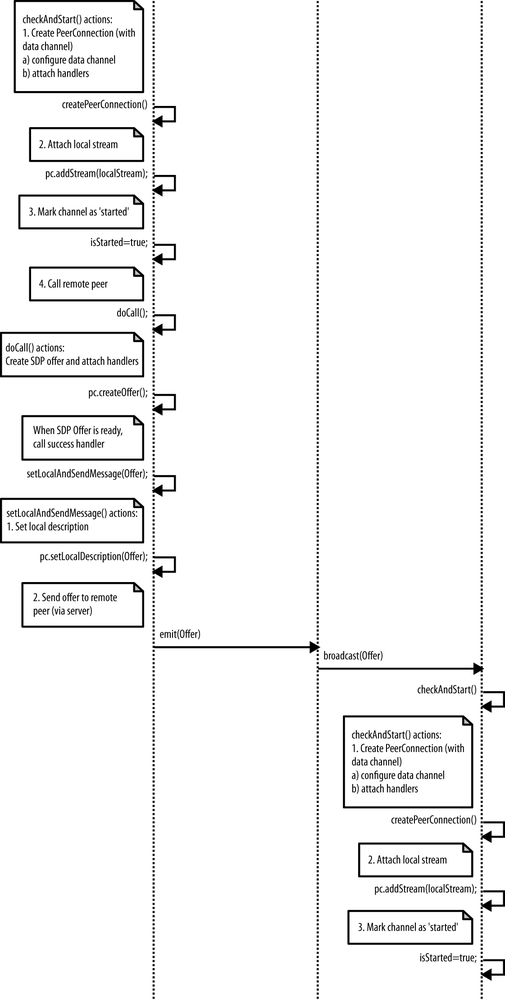Chapter 5. Putting It All Together: Your First WebRTC System from Scratch
We are finally ready to put all the pieces together and build our first WebRTC application. In this chapter, by leveraging a signaling server like the one we described in Chapter 4, we will implement the Browser RTC Trapezoid in a distributed scenario. Basically, we will take the running example of Chapter 3 and let it also work beyond the limits of a local perspective.
We will show how to use the signaling channel to allow two peers to exchange user media information, session descriptions, and ICE protocol candidates. We will also highlight how the signaling server role proves fundamental only during the setup phase. Indeed, once the above information has been successfully exchanged, the communication paradigm switches to pure peer-to-peer, with the server itself having no involvement in the actual data exchange phases.
A Complete WebRTC Call Flow
Figures 5-1, 5-2, and 5-3 provide the big picture associated with a complete WebRTC call flow involving a channel Initiator, a channel Joiner, and a signaling server relaying messages between them at channel setup time.


Get Real-Time Communication with WebRTC now with the O’Reilly learning platform.
O’Reilly members experience books, live events, courses curated by job role, and more from O’Reilly and nearly 200 top publishers.

